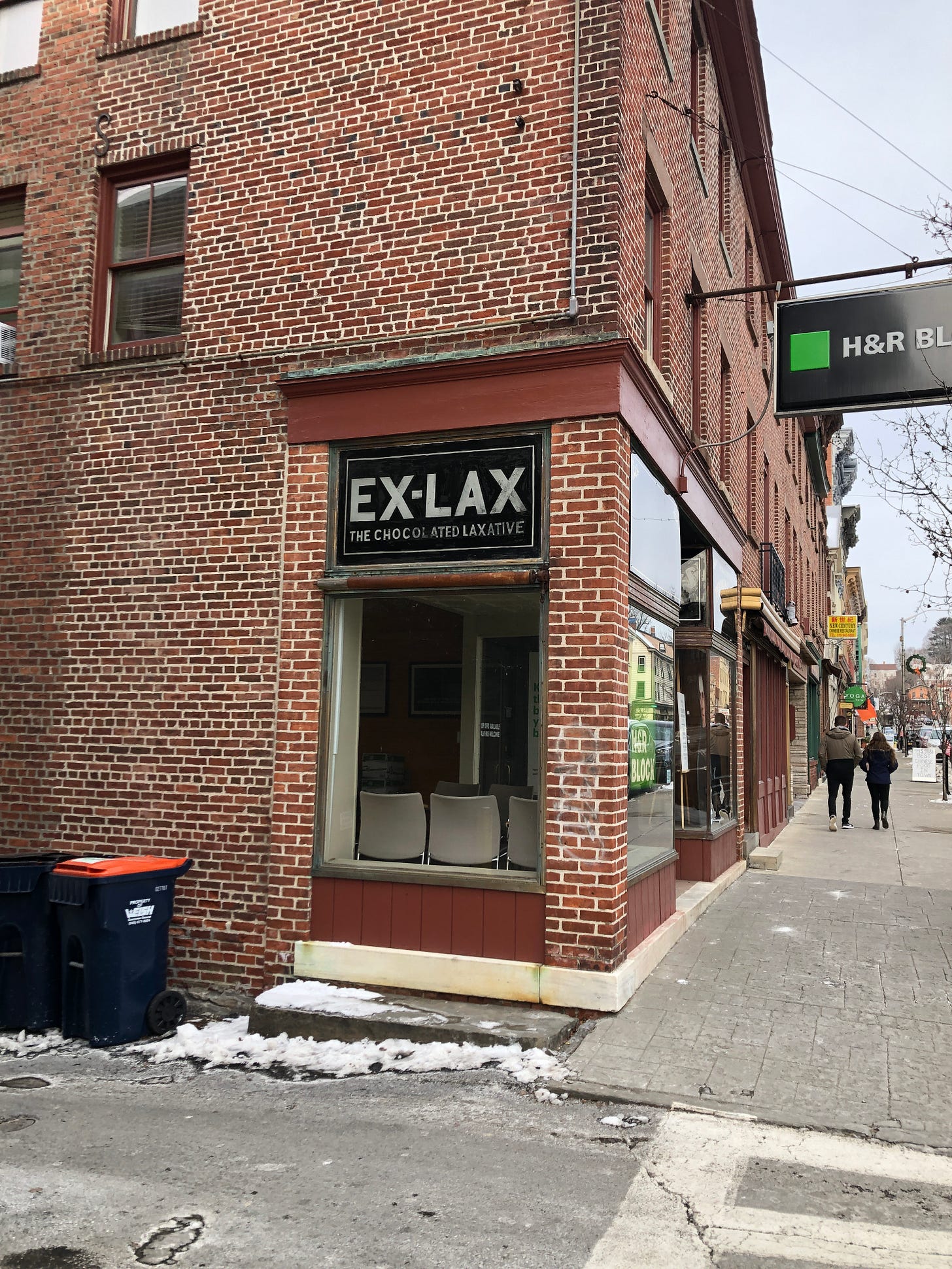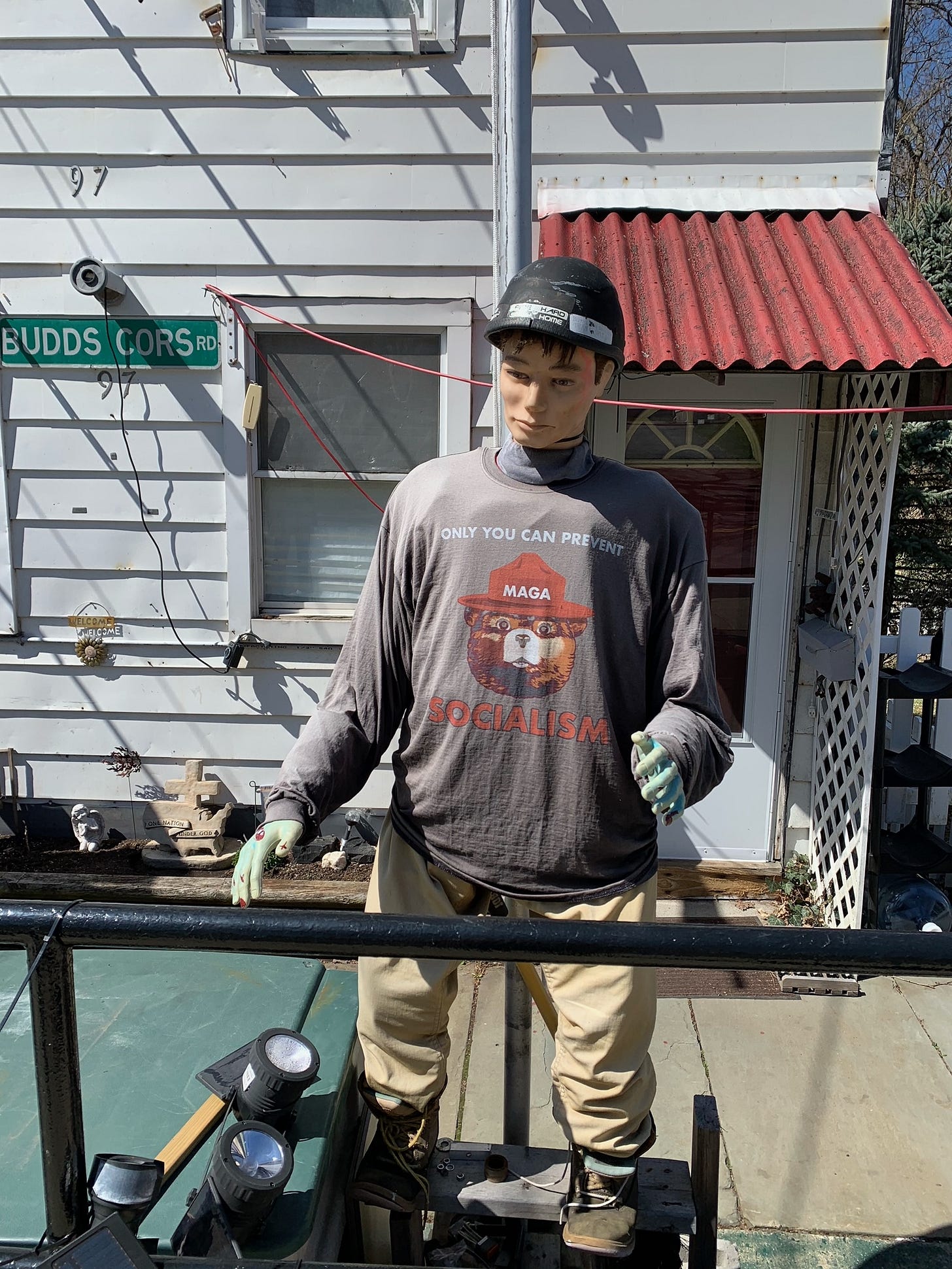Catskill, New York is best known as the setting for Washington Irving’s 1819 “The Legend of Rip Van Winkle,” whose protagonist sets out one day from his village at the foot of the mountains and falls in with a company of mysterious Dutchmen dressed in the fashion of the 17th century, the high boots, the ruffs. They ply Rip with liquor until he falls into a drunken sleep, and when he wakes he discovers that twenty years have passed and he is now old.
Rip Van Winkle is famous enough to have a bridge named after him. As far as I know, it’s the only bridge in the U.S. named for a character in literature, a minor character in a minor work, but still. Even on cold days I like to walk across it and gaze down at the blue-gray Hudson passing silently below.
The river is probably not too much changed from what it was in Washington Irving’s time. There are few houses along the steeply sloping banks, and the small park at Dutchman’s Landing is the only major sign of human settlement unless you turn to the east to take in the towers of Olana, the red Moorish folly of the painter Frederick Church, and the railroad tracks that run so close to the water that a flood might wash them away. The town of Catskill has a janky, patched-together charm. The streets drop sharply from the riverbank to Catskill Creek, then climb once more. On Thompson Street a few large, well-kept-up houses look across at drunkenly listing piles with plywood doors. Time doesn’t stand still, but it proceeds in jerks like a rusted clock. The storefront of a tax preparer on Main Street still bears a sign from the pharmacy that must have been a prior tenant. How many years before?
The problem with time moving in jerks is that each tick disrupts the former order of things and the sense of safety that inhered in that order. Catskill is a working-class town that like many of the towns along the river is being inundated with money and people who have a surplus of it. The money is bearing away much of what made Catskill an attractive place to live. When a physical therapist at the place where I go for rehab was apartment-hunting with her fiancé, the only thing they could find in town was a studio renting for $2,000. Under these circumstances, it’s natural for people to become resentful. Maybe they express that resentment in jeering nicknames for the newcomers, in the beginning, behind the newcomers’ backs, in muttered asides to other locals standing on the checkout line at the Williams. One such nickname is “citiots,” which is also the name of a coffee shop on Main. Maybe they vent their ill-feeling more aggressively. On Spring Street there was a place my wife and I called the Trump House, whose owner constructed an outdoor diorama of anti-wokeness that gave the finger to any citiot who happens to be passing by in a Tesla.
I’m not sure of what place we occupy in this schema. There’s no getting around the fact that my wife and I are citiots, even though we’ve lived in the Hudson Valley for most of the last 25 years, moving from town to town as each gets priced out of our reach. Personally, I want Catskill to stay what it was, but I know that just by being here I push it toward a future that may be no more desirable to me than it is to the owner of the Trump House. Maybe that’s why I’m so interested in the recent and maybe still ongoing scandal at Catskill High School. You hear ‘scandal,’ and you think sex and graft, but this scandal isn’t about either. The Albany Times-Union described it as “an imbroglio allegedly involving tape and a musical rehearsal,” which is pretty accurate as far as it goes. Of course it misses certain points. It misses the scandal’s moral starkness, its clash of decency and baseness, a clash one might expect to encounter in a Frank Capra movie but not so much in a New York State high school in the 2020s.
One day this past February, Michelle Storrs-Ryan, the music teacher and choral director at Catskill High1, was rehearsing the chorus of the senior musical—this year it’s Cinderella-- and losing patience with some of the noisier kids. She tore a piece of tape off the dispenser and warned that unless they piped down she was going to have to use it on someone. It was a joke. A girl named Madison Mudge reportedly took the piece of tape and briefly placed it over her mouth. This was another joke.
According to an eye-witness, the exchange went:
Mrs. Storrs-Ryan: Don’t make me pull out the tape. [Pulls out the tape]
Madison Mudge: That’s not going to shut me up. [Puts the tape over her mouth]. I can still talk with it. [Removes the tape].
But another child may have missed the joke or not seen anything funny in it, and this child reported the incident to their parents, one of whom is said to be a member of the school board. They may have told their parents that the choral director didn’t just pull out a piece of tape but taped a kid’s mouth shut. Or maybe that’s what the parents heard them say. On February 26 Mrs. Storrs-Ryan was suspended. Principal Junait Shah, who had declined to penalize her for alleged misuse of a classroom supply, was suspended too.
Keep reading with a 7-day free trial
Subscribe to Peter Trachtenberg: Not Dark Yet to keep reading this post and get 7 days of free access to the full post archives.








